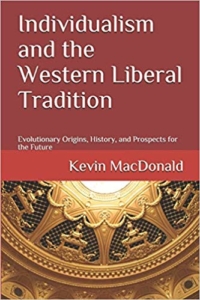Inside the ADL Strategy During the Red Scare: Flexible Strategizing Rather than Rigid Dogma
The execution of Julius and Ethel Rosenberg in 1953 marked one of the most charged moments of the early Cold War. The couple had been arrested in 1950 and convicted in 1951 for conspiring to pass United States atomic secrets to the Soviet Union. Their deaths in the electric chair were the first peacetime executions for espionage in American history. To many on the political Left, the case came to symbolize hysteria, scapegoating, and the excesses of McCarthy era justice.
Yet in a move that still startles observers, the Anti-Defamation League did not rally to their defense. Instead, the ADL helped legitimize the prosecution, worked against public sympathy for the Rosenbergs, and framed Communist defenses of them as a cynical abuse of antisemitism.
The organization’s choices were not random. They emerged from a broader effort by mainstream Jewish institutions to gradually break from Soviet-style Communist politics and reposition themselves as loyal partners of the American national security state. Over time, this repositioning dovetailed with a growing emphasis on Zionism and support for the new state of Israel. The Rosenberg case became one of the early stages where this transformation played out in full public view.
During the Second Red Scare, the ADL faced an atmosphere thick with suspicion. By 1948, surveys conducted by the American Jewish Committee revealed that 21 percent of Americans believed “most Jews are Communists,” and more than half associated Jews with atomic spying. In this climate, the ADL’s leaders resolved that defending the Rosenbergs would threaten Jewish security. Instead, the ADL issued a clear statement in 1952, declaring that global Communist support for the Rosenbergs was “a vivid example of the technique of falsely charging anti-Semitism to hide conspiracy.” They went further by directing Jewish organizations not to “support any meetings or attempts to develop pro-Rosenberg sympathy.” In New York, Rabbi George Fox joined the ADL in blocking a supportive meeting for the Rosenbergs at Temple Judea Hall.
While some might have called for clemency or justice, the ADL actively supported purging suspected Jewish Communists from its ranks, cooperated with the House Un-American Activities Committee, and supported the execution. Judge Irving Kaufman, who sentenced the Rosenbergs to death, was himself a member of the ADL’s Civil Rights committee.
The ADL, along with other organizations like the American Jewish Committee (AJC), released a joint statement rejecting claims by the National Committee to Secure Justice in the Rosenberg Case that antisemitism motivated the trial. They characterized these claims as efforts to “inject the false issue of anti-Semitism.”
The crackdown was felt throughout the community. Lucy Dawidowicz, an ardent Zionist and critic of Communism, observed that Jewish Communists viewed the ADL as “reactionary, fascist-collaborating oligarchs and conspiratorial enemies both of democracy and their own oppressed people.” The urgency grew as the American Jewish Left became associated with the radical fringe. Between 1940 and 1952, about 25 percent of Communist Party members were Jewish, though Jews composed only about three percent of the U.S. population. Of the 124 people questioned by Joe McCarthy’s Senate Committee on Homeland Security and Government Affairs in 1952, 79 were Jews.
Amid rising paranoia, Jewish advocacy organizations began sharing files with anti-Communist leaders like Roy Cohn and Senator McCarthy, “sharing their files on politically suspect organizations inside and outside the Jewish community,” as detailed by Stuart Svonkin in Jews Against Prejudice.
Within the ADL’s own oral history, director Benjamin Epstein described efforts to win editorial backing from Hearst-owned newspapers by securing their endorsement of U.S. aid to Israel as Jewish organizations shifted toward Zionist advocacy. When the Rosenberg defense committee insisted that antisemitism played a role in the Rosenberg trial, groups like the ADL and AJC dismissed such assertions. The AJC itself went the extra mile by infiltrating pro-Rosenberg meetings, reporting supporters to the FBI, and testifying before HUAC. Additionally, the AJC published “The Rosenberg Case: Fact and Fiction,” which was distributed globally with the U.S. State Department backing to counter the international campaign for clemency.
The ADL’s approach was partially shaped by fear, admitted decades later by Arnold Forster, the group’s civil rights director. Forster confessed in his memoir that support for the execution was motivated “more by fear than principle,” while Emmaia Gelman contended that the ADL sought to signal “Jews were not dissenters against the state.” Mainstream Jewish organizations endeavored to create a firewall between their own liberal stances and Communist views, pursuing new alliances in an attempt to blend in with broader American respectability.
This strategic flexibility was evident in other contexts as well. While the ADL refused to defend Julius and Ethel Rosenberg, it vigorously supported Anna Rosenberg, who has no relation to the Rosenbergs but was accused of Communist ties after her nomination as Assistant Secretary of Defense. ADL Director Benjamin Epstein warned that attacks on Anna Rosenberg were designed to keep Jews out of public office and framed her as “a latter-day [Albert] Dreyfus.” In effect, the ADL protected Jews who were towing the bipartisan line–a course of action that aligned with American Jewry’s transition toward Zionism in that epoch.
Of note, several Jewish figures such as Rabbi Abraham Cronbach and Albert Einstein defended the Rosenbergs, but their efforts were marginalized thanks to the Zionist vibe shift underway. Rabbi and the AJC’s executive S. Andhil Fineberg of the AJC boasted that only Cronbach and Einstein stood apart from the organizational consensus.
The flexible strategy that the ADL and its fellow Jewish organization employed during the McCarthy era endures to the present day. With Donald Trump’s rise, the ADL pivoted nimbly to both denounce and embrace him, depending on which posture best served Jewish and Zionist interests. ADL CEO Jonathan Greenblatt fiercely criticized Trump’s remarks after Charlottesville, condemned his anti-immigrant statements, and tied his rhetoric to rising antisemitism.
Yet, when Trump’s actions favored Zionist geopolitical aims, the ADL became a vocal supporter. The group praised the Trump administration’s embassy move to Jerusalem, endorsed his executive order on campus antisemitism, celebrated the Abraham Accords, and lauded Trump’s crackdown on pro-Palestinian activism. The ADL even hired a lobbying firm linked to Trump.
The ADL’s defense of the Rosenberg executions illuminates not only a moment of political expediency but a sustained pattern of strategic flexibility. Ultimately, Jewish power moves not according to fixed ideological lines but according to shifting interests, temporarily blending in with the broader American community, pivoting between respectability and radical advocacy as circumstances demand. This long-term strategy, born in the crucible of the Cold War, continues to drive Jewish institutions’ political behavior to this day.
Taken as a whole, Jewish organizations are best understood not through rigid ideological frameworks but as political actors guided above all by a single pragmatic calculus: Does this advance Jewish interests?“





Leave a Reply
Want to join the discussion?Feel free to contribute!